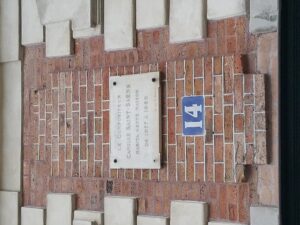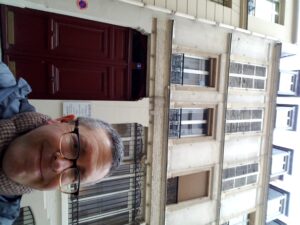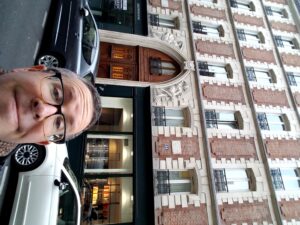TITLE: Symphony #3 “Symphony of Sorrowful Songs”
DESCRIPTION OF THE PIECE:
This piece was composed in 1976 and was criticized at the time for being too tonal, mainly because the composer, Henryk Górecki, had become known for atonal music. The first time I hear of this piece was in 1992, when a new recording came out and shot up the classical music charts. According to Wikipedia, this is the best-selling classical album of a modern composition of all time. This piece is generally categorized as “spiritual minimalism”—music that puts one in a meditative “spiritual” state through the use of slow repetition (think Arvo Pärt).
1st Movement: Lento—Sostenuto tranquillo ma cantabile (Slow—sustained and tranquil in a singing manner). This is a very lengthy first movement. Because different conductors conduct at different tempi, recording lengths vary. Of the recordings I listened to, the shortest one was 27 minutes long and the longest was 40 minutes long. That’s quite a span! The movement begins with a very lengthy canon (basically, a round) featuring only the strings. The first statement of the melody is by the double bass; with each new repetition more strings are added. The slow build is quite effective in setting up the mood of the text, which is not heard until the middle section of this movement, sung by a solo soprano. The text is from the 15th century and is meant to be the voice of Mary, mother of Jesus, speaking to her son on the cross. The translation of the text is:
My son, chosen and loved,
Let your mother share your wounds
And since, my dear son,
I have always kept you in my heart,
And loyally served you,
Speak to your mother, make her happy,
Though, my cherished hope, you are now leaving me.
You don’t need to read the words while you listen to the piece. Just read through them once and you’ll have the gist of it. Even though the movement is slow and repetitive, I beg of you to take the time to listen to it without any other distractions. This will move you.
My favorite recording I’ve found so far is on YouTube: http://www.youtube.com/watch?v=SV2P35Rj61A
This particular recording isn’t the prettiest to look at, but the tempo is just perfect! I will warn you that it is one of the slower recordings of this movement that I’ve heard, but I feel like it is much more meaningful at the slower tempo. It allows you to get into that meditative state and when the soprano starts singing…well…tears…
2nd movement: Lento e largo—Tranquillissimo
The text for this movement was found etched into the wall of a Gestapo prison by an 18-year-old female prisoner. Górecki said that he was touched by her words of comfort and prayer. Other prisoners had etched words of accusation or hatred toward their Nazi captors, but she just wanted to comfort her mother and gain strength from Mary. The translation of this text is:
No, Mother, do not weep,
Most chaste Queen of Heaven
Help me always.
Hail Mary.
I found a marvelously-produced video of this movement on YouTube: http://www.youtube.com/watch?v=miLV0o4AhE4
It is beautiful to listen to and beautiful to watch. In fact, my five-year-old daughter, whenever she’s heard me start the music of the second movement, she comes running because she wants to watch the video. And, despite its length, she sits and watches the whole thing. This is the shortest movement, but also extremely beautiful, and for me, at least, tears occur.
3rd movement: Lento—Cantabile-semplice
Text for this movement is a poem about a mother wondering what has become of her son, who was fighting in the Silesian Uprisings (1919-1921 between Poland and Germany).
Where has he gone,
My dearest son?
Killed by the harsh enemy, perhaps,
In the rebellion.
You bad people,
In the name of the Holy God,
Tell me why you killed
My dear son.
Will I have his protection,
Even if I weep
My old eyes away,
Or if my bitter tears
Were to make another River Oder,
They would not bring back
My son to life.
He lies in the grave
I know not where
Though I ask people
Everywhere
Perhaps the poor boy
Lies in a rough trench
Instead of lying, as he might,
In a warm bed.
Sing for him,
Little song-birds of God,
For his mother
Cannot find him.
And God’s little flowers,
May you bloom all around
So that my son
May sleep happily.
For this one, I’d suggest this YouTube video: http://www.youtube.com/watch?v=v_pn_cVqGJQ
It is the complete symphony, but the third movement starts at 37:50. The older gentleman the camera keeps focusing on is the composer. I believe this was filmed in 2001 and Górecki passed away in 2010. I find the soprano leans sharp, but it is beautifully filmed in a beautiful venue.
HIGHLIGHT: For me, it is when the first movement transitions from the opening section (the lengthy canon) to the middle section with the soprano. After hearing nothing but strings for fourteen to twenty minutes (depending on which recording you listen to), the single note played by the piano and harp is haunting and lovely, and then the soprano starts to sing those touching words of Mary, and I begin to cry. I really hope you will all take the time to listen to this marvelous work. It will change you as a human being.
WHAT’S LEFT TO LISTEN TO BY GÓRECKI?: At least 80 opus numbers, plus a fair amount of unpublished works. I’ll definitely be seeking out more pieces by Górecki in the future.



